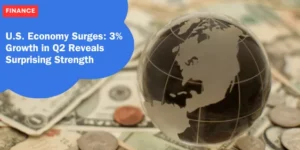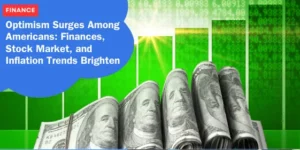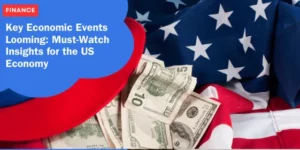The Hidden Downsides in the Positive Jobs Report

In a time when Americans and the Federal Reserve are clamoring for clear-cut data about the state of the economy, the latest jobs report delivered a mixed bag of information.
On the surface, it appears that there were significant job gains, yet lingering beneath are some less evident but concerning trends.
These trends add to the plethora of economic news that has included slower GDP growth, reduced consumer spending, and an increase in credit card delinquencies.
Job Gains: A Mixed Blessing
While creating more jobs is instinctively a positive development, the specifics of this report paint a more complex picture.
Renowned economist Dean Baker articulated this sentiment to CNN, saying, “It’s hard not to like a lot of jobs.”
However, he added that the latest data also ingrained itself into the ongoing narrative of unwelcome economic indicators.
Understanding the Job Creation vs. Unemployment Paradox
Diane Swonk, the chief economist with KPMG, emphasized the duality present in the data by stating, “The good news is we saw the explosion in payrolls.
The downside is the increase in unemployment coupled with faster wage growth.
This paradox emerges because, while companies have added a robust 272,000 net jobs, the unemployment rate has simultaneously risen.
The Rise in Unemployment
The unemployment rate has ticked up to 4% from 3.9%, marking the first occasion in over two years where the jobless rate is not below 4%.
This increase in unemployment can be attributed to the household survey—one of the two surveys that constitute the monthly jobs report.
While the establishment survey indicated strong job growth, the household survey presented a contrasting viewpoint.
Insights from the Household Survey
The household survey highlighted that employment, as measured by household survey responses, fell by 408,000 jobs from April to May.
Additionally, the number of people in the labor force dropped by 250,000, and the labor force participation rate edged down slightly to 62.5% from 62.7%.
Gus Faucher, PNC’s chief economist, noted, “Jobs declined in the household survey, but that number is more volatile than the employer survey.”
Unemployment’s slight rise, by just 0.1 percentage points, does carry its own implications.
Julia Pollak, chief economist at ZipRecruiter, explained its psychological impact: “4% is thought of as a magical number—one below which participation rises and employment rates increase faster for women and minorities.”
Such nuances underscore the complexity of interpreting labor market dynamics.
Wage Growth on the Rise
Contributing further to the mixed economic picture, wage growth has also picked up.
The stronger-than-expected wage gains for the month have elevated average hourly earnings by 4.1% over the past year.
This uptick reverses a monthslong trend of cooling wages, which adds an interesting layer to the economic puzzle.
The Federal Reserve’s Perspective
Though the Federal Reserve does not directly target wages, the sectors where wage increases were most pronounced are critical to their inflation measures.
Diane Swonk highlighted, “Where the wages picked up are in the service sector areas where we have seen the most inflation.”
This includes personal care services, dry cleaning, home maintenance, and vehicle maintenance.
Addressing wage-driven inflation is particularly challenging for the Federal Reserve.
Not only do they need to counterbalance wage increases with reductions in other areas, such as goods prices, but they must do so consistently to manage inflation in service industries effectively.
Emerging Weak Spots in the Labor Market
While fewer job cuts are always welcome news, a report released on Thursday also shed light on a new concern: a slowdown in hiring announcements.
As of May this year, employers in the US announced plans to hire 50,833 workers, marking the lowest total for the first five months of any year since 2014.
Andrew Challenger, senior vice president at Challenger, Gray & Christmas, remarked, “The typical churn in a healthy labor market appears to be stalling.”
Layoffs vs. Hirings
Although hirings have retreated and job openings have declined, layoffs remain relatively low.
Weekly jobless claims are below pre-pandemic levels, and Challenger’s own report showed a 20% decrease in job cut announcements when compared to May 2023.
Wells Fargo economists Sarah House and Mike Pugliese noted, “There are ample signs that the heat in the labor market over the past few years largely has been removed.”
The Overall Economic Slowdown
Low GDP growth further complicates the labor market’s outlook.
Last week’s gross domestic product report, which measures all goods and services produced, showed a 1.3% annualized rate—down from the initially estimated 1.6%.
The slower pace of economic expansion primarily stems from downgraded consumer spending, which makes up about 70% of the US economy.
Spending grew by 2% in the January-through-March period, compared to the initial figure of 2.5%.
Corporate Profits: A Mixed Bag
The latest GDP report also revealed a significant decline in corporate profits before taxes for the first quarter—down 0.6%, marking the first drop in a year.
This decline contrasts sharply with the 4.1% increase in the previous three-month period.
Despite mostly stable corporate earnings this quarter, companies have reported increased difficulty in passing on rising costs to consumers.
Conclusion
While the latest jobs report highlights strong job creation, it simultaneously uncovers hidden weaknesses that cannot be ignored.
The rise in unemployment, increasing wage growth, and declining hiring announcements present a nuanced and challenging economic outlook.
Economists, policymakers, and financial analysts must navigate these complexities skillfully to ensure that the positive aspects of job creation do not overshadow the underlying issues, which could have long-term implications for the overall economy.






